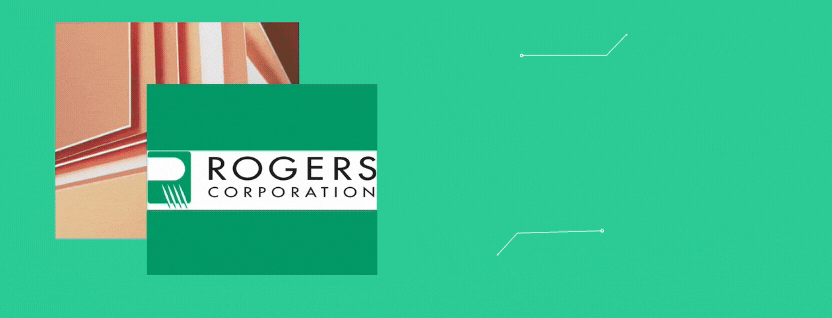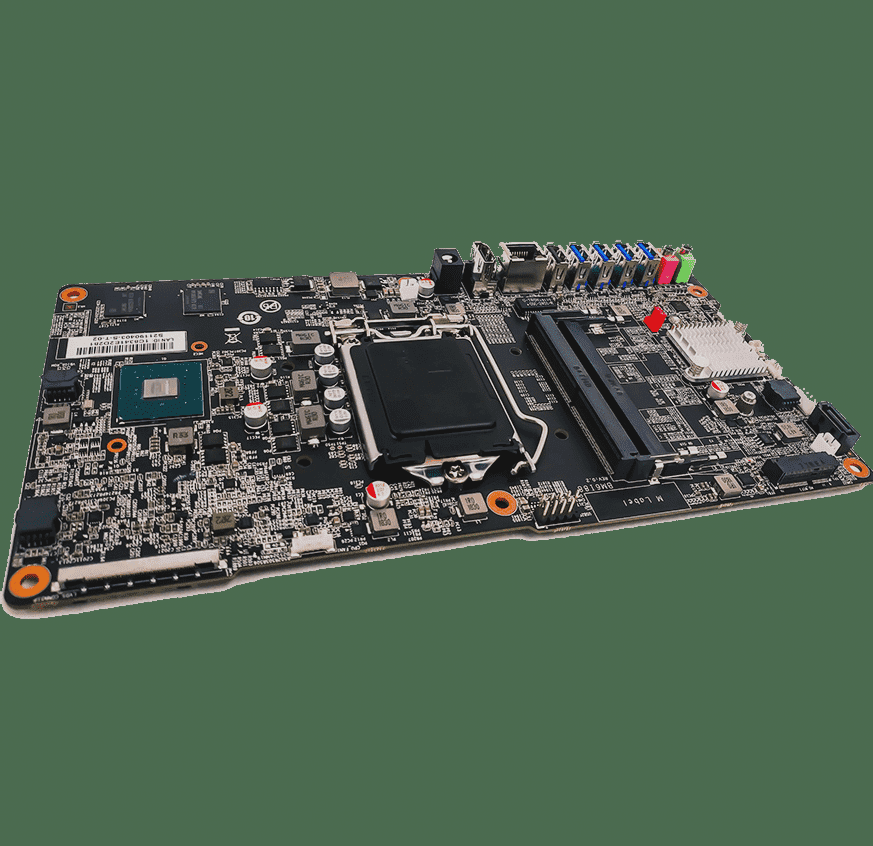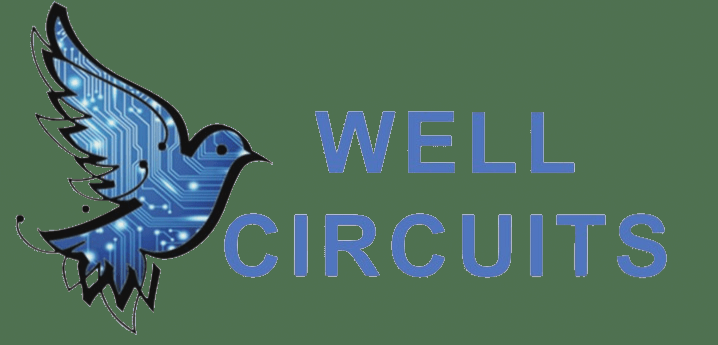
The Importance of Quickturn PCB Services
Quickturn PCB services help to minimize production time because turnaround times vary from 24 hours up to 7 days based on design complexity. The main purpose of these services is for prototyping and small production batches, where engineers can quickly and precisely verify how the final product will perform. The cost per board for quick-turn PCB manufacturing tends to be higher than standard processes because of the accelerated production timelines. Focusing on Design for Manufacturability and the correct preparation of Gerbers will help prevent delays and errors for a seamless process. Well Circuits’ Quickturn PCBs succeed in meeting small to medium production quality standards and excel at functional testing and prototyping.
Key Elements of Efficient Quickturn PCB Manufacturing
Quickturn PCBs enable marked reductions in lead times by allowing printed circuit board fabrication, assembly, and testing to be completed within 24 hours up to 7 days based on design complexity. The use of sophisticated technologies like Laser Direct Imaging (LDI) enables precise PCB patterning without photomasks, which is essential for achieving fast turnaround times. The process decreases production time while improving accuracy levels. The design of multi-layer PCBs is essential for fulfilling modern electronic devices’ complex requirements, and these designs are optimized for quick-turn manufacturing efficiency. The surface mount technology (SMT) assembly process is enhanced by using new solder materials that cool quickly and have lower melting points to speed up the reflow process. Production processes become faster while reliability rates increase.
Speed vs. Precision
The quick-turn PCB manufacturing approach focuses on speed to achieve delivery timelines of 24 hours and minimizes production turnaround times when compared to traditional manufacturing processes. The rapid pace of quick-turn production processes sometimes leads to small defects that escape detection more easily than in extended manufacturing cycles. Quick-turn PCB production achieves its fast turnaround times by selecting materials that are available for immediate use, which ensures the right balance between speed and material selection. The complexity of a PCB design that includes multiple layers can affect the ability to secure the fastest turnaround times in quick-turn services. Standard PCB fabrication processes operate within a two-to-eight-week window, which demonstrates a significant lead time gap relative to quick-turn service delivery speed.
Streamlined Manufacturing Process
The quick-turn PCB manufacturing process features streamlined operations that deliver speed and precision through high efficiency. Specialized Computer-Aided Design (CAD) software is used to create the PCB design, which marks the initial step in the process. In this stage, engineers establish essential design features, including where to place components and how to route traces, along with the layer stack-up configuration. Design iterations occur at a high speed when advanced CAD tools with built-in design rule-checking (DRC) capabilities are used. The quick-turn approach excels at rapid prototyping and constrained production runs because of its emphasis on speed and efficiency.
The Role of Technology in Quickturn PCB Production
The Laser Direct Imaging technique achieves ultra-precise PCB layer patterning by removing photomask requirements and thus shortens production time while improving accuracy.
The technology of 3D Printed Electronics enables quick prototyping of intricate 3D PCB shapes while integrating circuits into printed objects and thus expands design possibilities.
Digital Twin Technology generates virtual models of production lines for real-time monitoring and assists in predictive maintenance and process optimization.
AR systems assist technicians during assembly operations, which helps them navigate intricate procedures and reduces mistakes while shortening training time for speedy PCB production.
Artificial Intelligence enhancements in Automated Optical Inspection (AOI) systems improve defect detection speed and accuracy and minimize false positive rates during inspections.
Artificial Intelligence in PCB Manufacturing
AI-driven DRC systems in PCB manufacturing discover potential design problems quickly and precisely. Through access to large databases containing proven designs, these systems enhance their ability to identify flaws over time. The application of strict design rule enforcement through AI technologies leads to substantial reductions in design errors during PCB production. Machine learning algorithms continuously adjust production parameters in real-time to ensure consistent quality throughout the manufacturing process. The application of AI and machine learning technologies brings revolutionary improvements to PCB production by simultaneously increasing speed and precision.
Advanced CAD/CAM Software
Modern CAD tools incorporate complex auto-routing algorithms to speed up the development of effective trace layouts for PCB designs. Current CAD software enables real-time collaboration, which permits multiple engineers to work together on a single PCB design project at the same time. The tool boosts productivity levels while stimulating innovative thinking. Advanced CAM software processes design files into precise machine instructions, which reduces setup time and lowers human error during PCB production. The combined use of CAD and CAM software has improved the PCB design and manufacturing process to ensure smooth progression from prototype development to production-ready boards. The PCB industry benefits greatly from CAD/CAM software systems that improve design precision alongside production efficiency.
Innovative Materials and Their Impact
Advancements in PCB manufacturing materials and components now allow manufacturers to create tighter layouts and achieve higher clock speeds without sacrificing signal quality. High-speed laminates play a key role in improving signal integrity to support the requirements of modern electronic systems. Integrating components like resistors and capacitors into the PCB layers boosts reliability and cuts down assembly duration. The development of new solder materials that cool faster and melt at lower temperatures speeds up the SMT assembly reflow process. Multi-layer PCB technology enables compact and complex design solutions that meet modern electronic requirements by delivering improved efficiency and enhanced reliability.
Quality Control in Quickturn PCB Services
Strict adherence to ISO and IPC standards is essential for quick-turn PCB services to produce a reliable final product. The process of creating quick-turn PCBs demands adherence to RoHS standards as a fundamental quality control practice. Design rule checks (DRC) and design for manufacturability (DFM) analyses performed by automated systems enable manufacturers to detect potential design problems before initiating production. Advanced image processing algorithms analyze results from high-speed cameras during Automated Optical Inspection (AOI) production runs to identify product defects. Rigorous inspection protocols validate incoming parts for authenticity and specifications to ensure component quality and avoid downstream problems in quick-turn PCB services.
Automated Optical Inspection (AOI)
The Automated Optical Inspection process is essential in accelerating PCB manufacturing while maintaining product quality and reliability standards. The utilization of advanced image processing techniques enables AOI systems to quickly identify defects in PCBs. The use of AOI technology has greatly diminished human error throughout the PCB fabrication inspection stage. AOI technology allows manufacturers to perform inspections throughout multiple points in the PCB assembly line which leads to better overall efficiency. AOI delivers instantaneous feedback which allows operators to make quick corrective measures throughout the rapid PCB production process.
Ensuring Reliable Output
Rapid PCB production requires strict quality standards because faster production timelines lead to more errors and less time for inspection. The key solution to overcome these production challenges is to establish strong quality control systems. Successful fast-track PCB production depends on following ISO and IPC standards while maintaining RoHS compliance to achieve product reliability.
Manufacturers implement automated design rule checks (DRC) and design for manufacturability (DFM) analysis to improve the reliability of their final products. Manufacturers use these tools to detect potential problems before starting the production process. The verification process for incoming components involves meticulous checks of their authenticity and quality against specific standards and specifications. The quick-turn PCB production process depends on this step to prevent future problems and maintain dependable production results.
The primary challenges of quick-turn PCB quality control consist of balancing speed with thorough inspection while also adapting to frequent design changes and maintaining consistency in small batch sizes. Manufacturers who implement comprehensive quality control measures can efficiently produce high-quality PCBs by overcoming specific production challenges.
Design Optimization for Quickturn PCB
Quick-turn PCB production relies heavily on design optimization that achieves an equilibrium between manufacturability and speed while maintaining performance to fulfill fast turnaround needs. Reducing the number of layers in PCB designs to two or four layers serves as an effective strategy. Quick-turn projects benefit from this strategy because it lowers both production time and associated costs. Whenever possible, engineers should select standard board sizes because non-standard dimensions require additional setup time and increase expenses.
Maintaining signal integrity in fast-paced PCB assembly requires the implementation of controlled impedance designs. The controlled impedance design approach meets the essential requirements for speed and performance in current electronic devices. The use of assembly services together with instant quoting tools assists in making the quick-turn PCB process more efficient. The tools used guarantee that design performance criteria are met while also ensuring adherence to strict deadline requirements.
The application of these strategies allows quick-turn PCB production to attain both efficiency and reliability, which makes it perfectly aligned with contemporary manufacturing requirements.
Designing for Manufacturability
Designing for manufacturability means adapting PCB designs to match the manufacturer’s capabilities, which prevents production delays and errors. The foundation of good DFM practices lies in the proper preparation of Gerber files according to the manufacturer’s specifications. The completion of this step is essential to avoid production delays and prevent manufacturing mistakes. Designers can detect production issues before manufacturing starts through the use of tools like DFM check software. PCB design files analysis through these tools enables early detection of potential problems. Working closely with PCB manufacturers helps spot production difficulties during the design phase, leading to better manufacturability. The use of standardized components and manufacturable PCB design optimizations achieves a necessary balance between design complexity and production speed, crucial for quick-turn PCB production.
Assembly Considerations
Prototyping quick-turn PCB assemblies through hand soldering offers a faster route than those needing stencils and SMT programming with specific tooling. The manufacturing of printed circuit boards with complex designs requires extended lead times because they demand more sophisticated processes, including multiple copper layers and high component density. Quick processing in quick-turn PCB assembly services requires efficient documentation submission to maintain accurate customer service and punctual production schedules. Quick-turn PCB assembly becomes faster through manufacturer partnerships and the use of existing component stock. To meet urgent assembly needs efficiently, it is essential to submit a PCB assembly package on time with complete information, including lead times and schedules.
Partnering with Established Providers
Well Circuits’ long-standing supply chain relationships and supplier connections enable faster delivery times for clients. The higher cost of local quick-turn services makes them well-suited for urgent prototypes requiring fast delivery. Well Circuits maintains rigorous compliance with industry standards, including IPC, ISO, UL, and RoHS, to ensure high-quality and dependable PCB production. Partnering with Well Circuits can achieve shorter lead times because they eliminate the delays caused by international shipping and communication issues. Well Circuits maintains specialized processes and advanced facilities to accelerate New Product Introduction (NPI), prototyping, and engineering work, which results in optimized time and resource efficiency.
Benefits of Working with Well Circuits
Well Circuits stands out because its skilled team maintains regular adherence to project timelines, which results in dependable delivery schedules. The company provides modern facilities that feature advanced technological equipment, including laser drills and solder mask spray coating machines. Well Circuits’ engineering team delivers round-the-clock support to help customers meet their design requirements. Their full certification covers all required industry standards, which enables them to produce high-quality compliant PCB products. Well Circuits delivers sophisticated design tools that help fast-track and optimize the design process for its clients.
Strategies for Reducing Time-to-Market
Quick-turn PCB assembly functions as a vital approach to shorten time-to-market for electronic products through accelerated delivery of superior quality products. The use of advanced technologies like AI-driven design verification, together with automated optical inspection, greatly improves quick-turn PCB production quality while speeding up the manufacturing process. Advanced techniques allow companies to achieve unmatched speed and flexibility for quick prototyping and rapid iterations based on market needs.
Engineers and project managers need to assess project timelines, budget constraints, and design complexity to successfully implement quick-turn PCBs and decrease time-to-market. The electronics industry expects that upcoming developments in quick-turn PCB technologies will bring faster production processes and better materials that minimize time-to-market.
Utilizing Advanced Tools for Quickturn Success
Quick-turn PCB assembly functions as a vital approach to shorten time-to-market for electronic products through accelerated delivery of superior quality products. The use of advanced technologies like AI-driven design verification, together with automated optical inspection, greatly improves quick-turn PCB production quality while speeding up the manufacturing process. Advanced techniques allow companies to achieve unmatched speed and flexibility for quick prototyping and rapid iterations based on market needs.
Engineers and project managers need to assess project timelines, budget constraints, and design complexity to successfully implement quick-turn PCBs and decrease time-to-market. The electronics industry expects that upcoming developments in quick-turn PCB technologies will bring faster production processes and better materials that minimize time-to-market.
InstantDFM™ for Instant Quotes
With InstantDFM™, users can order customized PCBs more efficiently because they receive quick price quotes and immediate ordering options. To get an InstantDFM™ repor,t users must first upload files and complete a short questionnaire. Users can adjust materials, surface finishes and manufacturing specifications after they complete their review of the report. After customizations are finalized users review the quote to place orders directly through the InstantDFM™ platform. Quick-turn printed circuit board projects become more efficient because this software streamlines the process of quoting and ordering.
Managing ITAR-Regulated Projects
Protection of sensitive data along with government regulation compliance, remains essential throughout the production of ITAR-regulated PCBs. The production of high-technology ITAR PCBs demands early input from fabricators to address sophisticated design elements like blind/buried vias and embedded resistors, which can result in longer lead times. Email transmission of ITAR data is prohibited; users must utilize protected file exchange platforms such as password-secured SharePoint folders to avoid production delays. Military application PCBs that fall under ITAR regulation require advanced technological components and specialized handling, along with strict security protocols. The production process for ITAR-regulated PCBs requires comprehensive control of design and manufacturing to protect sensitive information.
Overcoming Challenges in Quickturn PCB Services
Quick-turn PCB production services focus on fast delivery with production times between 24 hours and 7 days based on design complexity yet they ensure adherence to quality standards. Quick-turn PCB services require effective design for manufacturability (DFM) practices, which encompass proper Gerber preparation and complete output packages management to prevent production delays. Quick-turn PCB manufacturers struggle to achieve production speed alongside exhaustive inspections and accommodate regular design updates while preserving product quality. Quick-turn PCB services demand higher prices because they use accelerated production methods. High-quality standards in swift PCB fabrication and assembly require comprehensive quality control measures, including automated design rule checks together with component inspection and advanced inspection techniques.
Navigating Constraints with Confidence
Quick-turn PCB services achieve effectiveness through internal capabilities and integrated workflows, which enable faster order processing and decreased lead times for urgent jobs. The effectiveness of these services improves through the use of advanced technologies such as Artificial Intelligence and Machine Learning, which both refine manufacturing processes and accurately identify design defects. Producers focus on Design for Manufacturability (DFM) to make sure PCB designs work well with production facilities so they can avoid delays from design problems.
Quick-turn PCB services cost more than standard lead times but enable rapid prototyping and production of low-volume runs. To ensure efficient operations, businesses must evaluate quick-turn manufacturers’ minimum order quantities together with cost and quality requirements.
Conclusion: Embracing Quickturn PCB Solutions for Innovation
Rapid PCB manufacturing services provide critical support to industries like IoT, military, medical, aerospace, and consumer electronics through their ability to expedite prototyping and design changes. Quick service delivery speeds up product launch times, which provides electronics firms with a decisive market advantage. Quick-turn PCB manufacturers like Well Circuits use advanced in-house technologies, including LDI and laser drills, to fabricate rigid PCBs within 24 hours. Engineers and designers depend on these services to speed up their development process within strict deadlines while upholding high-quality and performance requirements. Quick-turn PCB services use agile production methods to handle small batch sizes, which facilitates rapid design changes based on test outcomes and feedback loops.
Well Circuits has multiple quick-turn production lines that can support your urgent PCB and PCBA needs. If you are interested, please feel free to contact us for more information.


